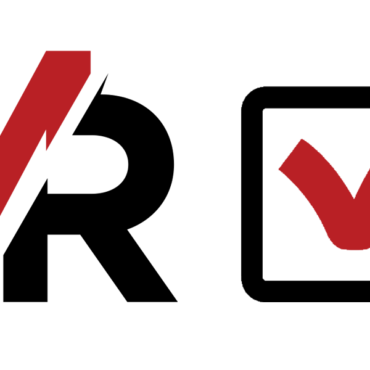What is change management, and why do we need it in food and beverage manufacturing? Change management is a system for managing people and how change is implemented within an organization. It can be used strategically to manage large, overarching organizational changes or more tactically to target changes within a manufacturing operation, which is where we will focus our attention in this article.
All businesses need to change to grow and become more successful. Failure to adapt and change can lead to a stale and stagnant organization,with unfavorable financial consequences. In contrast, excessive, uncontrolled change will lead to instability and possible failure, with potentially catastrophic consequences.
From a practical perspective, change management can be used to identify what changes can and cannot be made and provide a system for monitoring and tracking performance after implementation. Additionally, a change management program must be simple to implement and easy to use; otherwise, teams will work around it, bringing another set of problems.
a change management program must be simple to implement and easy to use
So, why does an organization need a change management program if it has not used one before? The simple answer is that it will provide transparency into the manufacturing process and allow for guidance and collaboration to help improve changes.
In today’s world, manufacturing operations face many challenges such as cost-cutting initiatives, staffing turnover, productivity and quality pressures, and various initiatives that keep key management away from the production floor. In addition, messages from leaders to take risks, to “think outside the box,” and the encouragement to “figure it out” allows people to implement change without understanding the consequences.
While management and employees have the best interests in mind when making these changes, they may not have the experience, skills, or knowledge to understand the upstream and downstream consequences. Also, some changes may not have an immediate impact, so once the change is made and positive results are seen, the person or team moves to the next issue.
Real-Life Example 1
Let us take a simple example of a fluid beverage manufacturer that does not have a change management program in place. The plant has been struggling with low productivity numbers, and the manager commented that the cleaning process is taking too long. A new sanitation employee who wants to make a difference decides to reduce a few variables on the clean-in-place (CIP) system, and the operation picks up an extra hour each day. The numbers improve, and the team is recognized for its improved performance.
Unfortunately, debris and biofilms accumulate within the system, and 30 days later, the facility experiences quality failures, which increase overtime. The plant then decides to halt operations and inspect various components, which results in the finding that the system has not been cleaned effectively.
Since significant losses and downtime exist, there is a lack of transparency about what change was made and by whom. Therefore, the organization will spend excessive time diagnosing a mechanical failure on the CIP system, having a third-party team conduct audits, and possibly changing chemicals and concentrations, all because a process change was implemented to improve productivity.
Real-Life Example 2
A similar operation has had multiple sterilization-in-place (SIP) failures due to loose clamps. As a result, a newly hired engineering manager from outside of the industry decided to research other materials and found that a different gasket is available that would not only prevent leakages, but also does not need to be changed for an extended period of time.
New gaskets are ordered, and the system is converted over time. As the system continues to operate, there are no leaks; however, quality failures occur 60 days from installation.
Following a full system shutdown and cleaning, the equipment is opened to find that the gaskets had developed microscopic cracks, leading to bacterial harborage. Also, biofilms had developed due to the lack of replacement at set frequencies, further contributing to the contamination.
As with the previous failure and due to the time and financial losses, there is a lack of ownership, and no one takes responsibility. Since the initial problem is not immediately identified, an excessive troubleshooting session occurs, followed by component changes, excessive CIPs, and chemical/concentration modifications. Both situations could have been prevented with a change management program.
So, how does one develop a change management program?
- First, identify why you are implementing a new program and what you plan to accomplish
- Obtain alignment with top management and ensure that they support the new initiative
- Create a streamlined process to make it simple to implement and easy to use
- Develop a training program that explains why it is important, how to use it, and what it will prevent
- Highlight the program with real-life case studies to show its effectiveness
- Review each program’s use and communicate the positives and what issues were prevented.
The simpler the program, the more effective it will be
Best Practices
Having been involved in creating and implementing change management programs in various facilities, I have learned some valuable lessons:
- Change management can be an educational platform to onboard, train, and retrain employees
- The simpler the program, the more effective it will be
- Roll out a training program that discusses which components and situations fall under the program and which do not
- Use a multi-phased approach, where plant personnel (i.e., the plant manager and quality manager) can make approvals, but can also escalate to a “corporate” team when needed
- Reinforcing the program with real-life examples is beneficial
- Electronic monitoring systems can give great insight into what changes are being made
- Continuous improvement with failure analysis, root cause analysis, post-mortem, or after-action review are essential.
Potential Pitfalls
- Change management programs that are too lengthy, complicated, or complex will be difficult to implement and follow
- Programs that cannot give approval within 8 hours will not solve problems in a timely manner
- Lack of reinforcement when the program is bypassed results in an ineffective program
- Too many signoffs for approval results in an overly complex program.
In conclusion, implementing a change management program has many benefits for an organization, with prevention and risk reduction at the forefront. Since the process will allow for an escalation of information to multiple team members, collaboration will allow for different perspectives, resulting in an improved outcome and better operational performance.
Bob Manning published in Food & Safety Magazine, May 2024.





Add Comment